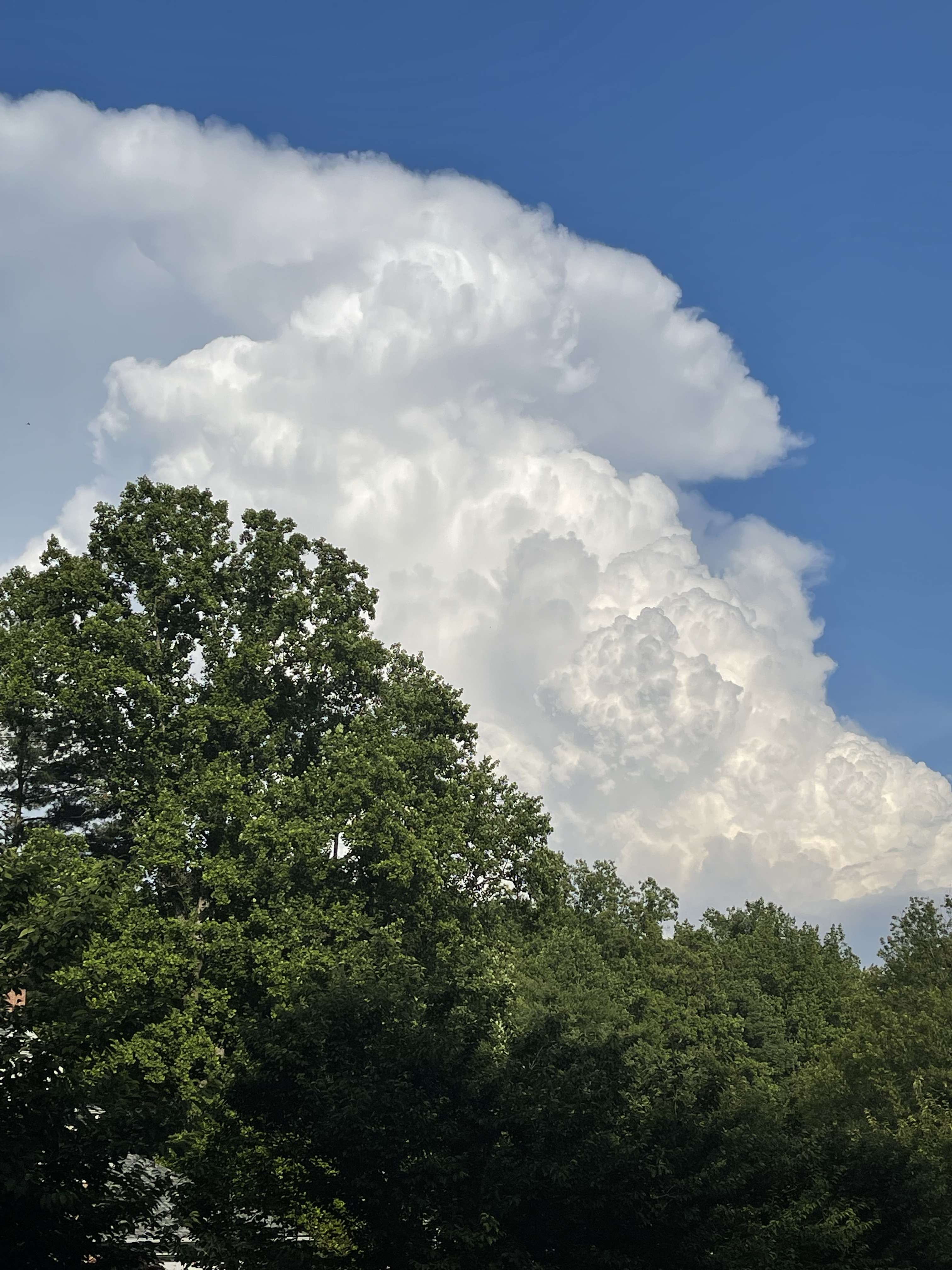-
Posts
44515 -
Joined
-
Last visited
-
Days Won
262
Posts posted by Phil
-
-
Jesse no longer has an account here?
-
GEFS also suggests the vortex takes another hit in the long range. These are crucial developmental stages, so perhaps the beast will be on seditives this winter. Never a given, though.
Keep in mind the zonal winds are climatologically strengthening at this time of year, so the long range depiction by the GEFS is notable.
http://www.atmos.albany.edu/student/hattard/realtime/u_65N_10hpa_gefs.png
-
Haha, wow. D15 (360hr) GEFS looks like something out of the Maunder Minimum.

http://i724.photobucket.com/albums/ww243/phillywillie/Mobile%20Uploads/64D72F81-0FB9-462F-8F77-ED3E8BADD400_zpsyssuxvuf.gif
-
If the October AO averages solidly negative (below -0.4 on the NOAA/CPC calculation), then it'd statistically guarantee a negative AO winter, given a -ENSO/+QBO background.
Since 1950, there are no coherent -ENSO/+QBO Octobers featuring solidly negative AOs that failed to reproduce the negative AOs during N/D/J/F/M.
-
I'm worried about a major ice storm or two this winter. I suspect the pattern will be highly conducive for CAD/overrunning at times w/ that WATL ridge nosing in at times from the NE.
As I alluded to earlier, I also suspect this will be a variable winter, with powerful arctic shots and mild periods occurring on a relatively frequent basis. Basically the opposite of last winter, which was more of the stagnant type.
-
Nice end on the 0z. Exactly what we want to see in October.
Yeah, 00z is back to the blocky solution w/ a weak PV. Good ensemble agreement too.
-
Yes, but frozen dew will still result in a frost advisory--same effect on crops. It also looks just like frost to a human observer.
They're totally different, both visually and physically speaking.
- "Frozen dew" requires sub-freezing temperatures and looks glassy/translucent, like your typical ice accretion via freezing rain. Hence if anything you'd be looking at a freeze warning, not a frost advisory, and really it's not something that occurs very often anyway given sublimation rates.
- "Frost" forms at the frost point, with temperatures/dewpoints often above 32 degrees. It has an obvious, "snowy" look to it, and isn't related whatsoever.
Freezing dew is basically like freezing a puddle of water.
-
Also, "frozen dew" is not frost. Frost arises via direct conversion from gaseous H^2O. Frozen dew is just ice.

-
I think you're probably making this much more complicated than the answer he was looking for.

Haha, probably.

Here's a basic rundown on the issue if you're interested. Simple, no equations or difficult physics.
-
Yes... certainly we can all agree on that... his question was about forecasting the frost, not how frost is created.

Well, the answer is no, the dewpoint doesn't have to be below 32F for frost to form. The frost-point is always higher than the dewpoint (stronger molecular bonding requires a higher temperature to complete a full break cycle at/below that threshold relative to surrounding H^2O molecules).
This is why aircraft often accumulates ice when flying through thunderheads.
-
2 ways:
1) Temperature is cooled to dew point, dew is formed, and temps eventually reach 32 or lower as the night progresses, causing the dew to freeze.
2) Dew point is 32 or lower, and temperature is cooled to the dew point, creating frost.
Remember that radiative cooling on a clear, windless night is often underestimated by models.
Well, it's the surfaces accreting frost that cool below 32F, not necessarily the air itself.
That's why you don't usually see frost on cloudy nights (radiative exchange between the clouds/nucleated aerosols and the surface prevents the surface from cooling below the LTE threshold).
This is also why you'll often see frost on open fields but not under trees, thanks to backradiation preventing the ground from radiating efficiently.
If it were just the temperature cooling to the dewpoint below 32F, you'd have freezing fog, or just regular fog. There's a difference here. The dewpoint doesn't have to drop below 32F.
-
Anyway, not a big deal, but hopefully we can get more persistent -PNA periods like the one last December in conjunction with a -AO... really need that -AO.
Yeah, I agree that we need some form of high latitude blocking this winter. I don't think it has to be a -AO, but a raging +AO/+EPO like last December won't work, obviously. Perhaps even a +EPO could work under a healthy -NAO/-PNA, neutral AO? Or a deep -EPO/-PNA/+NAO can work too, though that's more fragile I think, pattern wise...kinda hit & run, so to peak.
-
That's not how the PNA is calculated. See the link in my previous post. No real -PNA to speak of during last December..just a behemoth GOA vortex and equatorward Pacific Jet.
-
These appear to be monthly averages though, no? The -PNA period in the approximately December 11-25 range isn't going to show up. Anyway, not a big deal, but hopefully we can get more persistent -PNA periods like the one last December in conjunction with a -AO... really need that -AO.
That's the monthly average, yes. The daily averages are here if you're interested:
ftp://ftp.cpc.ncep.noaa.gov/cwlinks/norm.daily.pna.index.b500101.current.ascii
There was a weak -PNA stretch the lasted 5 days. Less than one standard deviation below average..basically a non signal relative to the EPO/NAM.
-
January 1943 @ 500mb. Block party, with -NAO dominance.

-
So much for Westerners who think negative NAO is bad for us.

Oh, 1942-43 also had a massive -NAO in January. Second strongest -NAO of any Niña winter, actually.
The strongest -NAO winter of all time is 1959-60. Here's what it looked like, temperature wise:
http://i724.photobucket.com/albums/ww243/phillywillie/Mobile%20Uploads/9F624EB5-F4A1-4A02-81AF-9894D0543A01_zpsargshgwb.png
-
For reference:
http://www.cpc.ncep.noaa.gov/products/precip/CWlink/pna/pna.timeseries.gif
-
I think the month may have averaged positive, but I recall a pretty distinct period mid month where the PNA was negative... remember it being one of the only good periods last winter. My old place near Peace Arch had like 4 days of flurries.
The index went weakly negative for 5-6 days, but really that wasn't a real -PNA, just an extremely contracted, fully coupled polar vortex and corresponding flat height rises over the mid-latitude Pacific.
Obviously, a pattern like that won't ever do the trick in the lowlands.
-
Very interesting. I wasn't even aware the NAO was in a negative phase during those favorable winters.
The winters of 2009/10, 2010/11, and 2012/13 were -NAO, while 2008/09 was neutral NAO. The winters of 2011-12, 2014/15, and 2015/16 were +NAO.
-
Hopefully we can get the PNA to go negative like last December. With a -AO it could really flood the PNW with frigid temps. Really impressed with the snowpack in eastern Siberia so far... no doubt the PNW will have access to a solid cold source early.
The PNA wasn't negative last December. It was quite positive, actually.
Last December was a strong +EPO/+NAM, with that flat equatorward NPAC ridge representing the climatological loading pattern for a +EPO. Definitely not a -PNA.
-
Seems neutral to slightly positive to me...
Based on which features, exactly? The computed PNA values reflect a weak negative PNA in Dec/Jan, followed by a heavily negative PNA in February.
-
It's quite interesting to note that Jan 1969 was one of the most negative NAO Januaries on record (if not the most negative) and it totally benefitted the NW. -NAO isn't always something that benefits the NE or NC part of the country.
Snowfall totals in the NW were incredible that month. Totally unreal that monthly anomalies that extreme can even happen!
Yeah, when juxtaposed with a -PNA, the -NAO can actually assist in keeping troughing in the west, as opposed to a January 2014 type deal. The prolonged +NAO in recent winters I think has been a contributing factor to the warmth in the western US, given that a +NAO constructively teleconnects with a +PNA, in most cases.
Meanwhile, the -NAO stretch from 2008-2013 featured improved winters over the western US as a whole.
-
Sounds intriguing. FWIW the Canadian seasonal forecast likes a cold NW in February also. If I'm not mistaking a -PNA / -NAO normally delivers for the NW.
Yeah, recent history suggests a -NAO is somewhat more favorable for precipitation/snowfall during sharp -PNA events.
-
Where do you get the Euro monthlies? I haven't seen them on Weather Bell.
I have an academic account on StormVista.



October 2016 Observations and Model Discussion for the Pacific Northwest
in West of the Rockies
Posted
My goodness, so sorry to hear. My thoughts, prayers, and condolences.